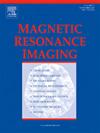协调连接体重采样在体素大小的差异。
IF 2
4区 医学
Q2 RADIOLOGY, NUCLEAR MEDICINE & MEDICAL IMAGING
引用次数: 0
摘要
弥散磁共振成像(dMRI)纤维束成像提供了令人兴奋的机会,加深我们对人类大脑连接的认识,并发现白质的新变化。迄今为止,还没有全面的研究描述扩散加权磁共振成像(dMRI)体素分辨率对高分辨率受试者数据产生的连接体的影响。我们通过比较来自人类连接组项目-年轻成人数据集(HCP-YA)的44名受试者(32名女性)在不同分辨率下的相同扫描的连接体,与扫描/重新扫描数据(88次扫描),评估了从dMRI数据中得出的图形测量的统计意义。我们探索了15种各向同性和各向异性分辨率,生成了束状图和连接体,并比较了每种分辨率与其最近的大分辨率和小分辨率之间的图形度量。几乎所有两两比较在图形测量中都产生了统计学上显著的差异(p ≤ 0.05,Wilcoxon Sign-Rank检验)。在以0.5 mm的增量向上采样14个向下采样分辨率后,我们观察到空间采样效应对神经束成像和连接体的复杂图测量的缓解。为了研究翻译影响,我们对来自HCP-YA的22名受试者重新采样到两个主要国家研究的分辨率,并使用不同的插值方法将这些数据上采样到1 mm各向同性。更高的分辨率提高了结果的相似性,即使在初始降采样之后也是如此。为了确保强大的束状图和连接体,重新采样数据到1 毫米各向同性分辨率。本文章由计算机程序翻译,如有差异,请以英文原文为准。
Harmonized connectome resampling for variance in voxel sizes
Diffusion MRI (dMRI) fiber tractography presents exciting opportunities to deepen our knowledge of human brain connectivity and discover novel alterations in white matter. To date, there has been no comprehensive study characterizing the effect of dMRI voxel resolution on the resulting connectome for subject data. We assessed the statistical significance of graph measures derived from dMRI data by comparing connectomes from the same scans across different resolutions with 44 subjects (32 female) from the Human Connectome Project – Young Adult dataset (HCP-YA) with scan/rescan data (88 scans). We explored 15 isotropic and anisotropic resolutions, generated tractography and connectomes, and compared graph measures between each resolution and its nearest larger and smaller resolutions. Nearly all pairwise comparisons yielded statistically significant differences in graph measures (p ≤ 0.05, Wilcoxon Sign-Rank Test). Upon up sampling the 14 down sampled resolutions in 0.5 mm increments, we observed mitigation of the spatial sampling effect on both the tractography and the connectome's complex graph measures. To investigate translational impact, we resampled 22 subjects from HCP-YA to the resolutions of two major national studies and up-sampled this data back to 1 mm isotropic with different interpolation methods. Similarity in results improved with higher resolution, even after initial down-sampling. To ensure robust tractography and connectomes, resample data to 1 mm isotropic resolution.
求助全文
通过发布文献求助,成功后即可免费获取论文全文。
去求助
来源期刊

Magnetic resonance imaging
医学-核医学
CiteScore
4.70
自引率
4.00%
发文量
194
审稿时长
83 days
期刊介绍:
Magnetic Resonance Imaging (MRI) is the first international multidisciplinary journal encompassing physical, life, and clinical science investigations as they relate to the development and use of magnetic resonance imaging. MRI is dedicated to both basic research, technological innovation and applications, providing a single forum for communication among radiologists, physicists, chemists, biochemists, biologists, engineers, internists, pathologists, physiologists, computer scientists, and mathematicians.
 求助内容:
求助内容: 应助结果提醒方式:
应助结果提醒方式:


